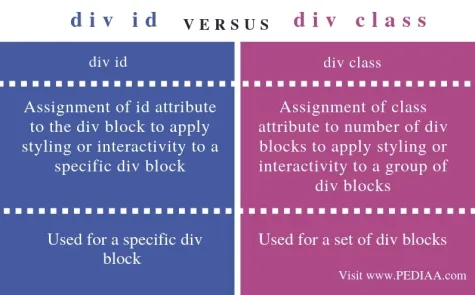
|
|
A class name can be used by multiple HTML elements, while an id name must only be used by one HTML element within the page: |
Difference Between HTML Class and ID
Follow the code. We make Difference Between HTML Class and ID
index.html
Example:
HTML
<!DOCTYPE html>
<html>
<head>
<style>
/* Style the element with the id "myHeader" */
#myHeader { background-color: lightblue; color: black; padding: 40px; text-align: center;
}
/* Style all elements with the class name "city" */
.city { background-color: tomato; color: white; padding: 10px;
}
</style>
</head>
<body>
<h2>Difference Between Class and ID</h2>
<p>A class name can be used by multiple HTML elements, while an id name must only be used by one HTML element within the page:</p>
<!-- An element with a unique id -->
<h1 id="myHeader">My Cities</h1>
<!-- Multiple elements with same class -->
<h2 class="city">London</h2>
<p>London is the capital of England.</p>
<h2 class="city">Paris</h2>
<p>Paris is the capital of France.</p>
<h2 class="city">Tokyo</h2>
<p>Tokyo is the capital of Japan.</p>
</body>
</html>
Output should be:

|
Category
: |
Web Tutorial |
|
Sub Category
: |
HTML id Attribute |
|
Uploaded by
: |
Admin |
Read Article https://horje.com/learn/1434/reference